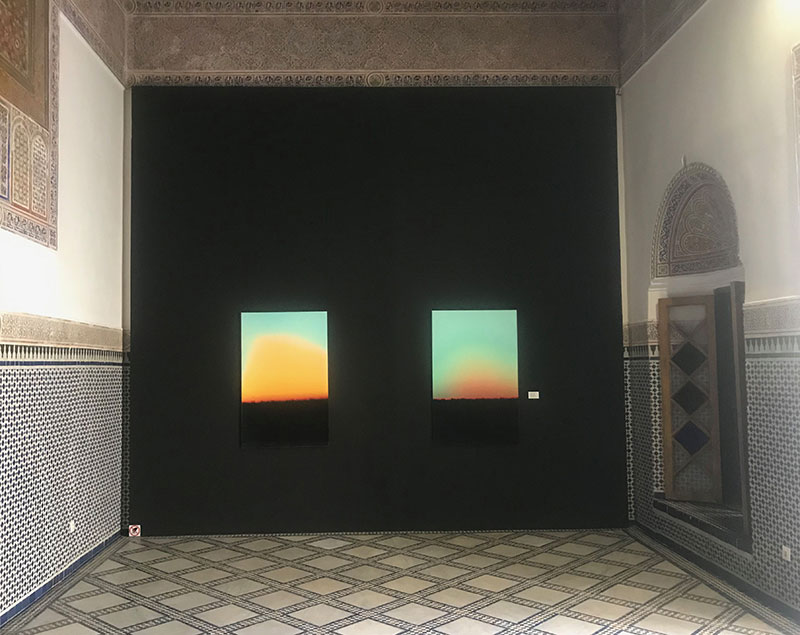
Accueil > Voir, Lire & écrire > Lire & écrire > Ibn El Farouk — Aletheia’s mourning
Ibn El Farouk — Aletheia’s mourning
Boujemaa Achefri, Translation by Mohammed Ghazal
, et
Toutes les versions de cet article : [English] [français]
L’exposition Au-delà au Musée National de Tissage et de Tapis Dar Si Said, marque la rencontre d’il y a dix ans, entre Ibn El Farouk et Hassan Sefrioui (galerie shart). Depuis l’aventure continue. L’exposition présente un ensemble de photographies expérimentales depuis la première collaboration jusqu’au aujourd’hui.
"We are crushed by things surrounding us. One has to give the writing some time for the sake of taking hold of it. Just as the historian, a writer bestows meaning on the past by giving it form. He does not seek to be the witness. He is only listening to the words designing its future."
(Edmond Jabès)
There is always something amiss in Ibn El Farouk’s photographic work.
Something hardly visible. Something that gives the illusion to sight that it is similar and different at the same time. It is not a "thing", but the glimpse of a feature that has not yet been formed. At the moment of the photographer’s representation, it shows all these similarities and differences on the fabric’s mesh.
What is similar and distinct in this so paradoxical substance (gelatine), is that it is sometimes yellowish sometimes red other times blue or black colored.
The similar and distinct, at the same time, that is what is postponed for a while.
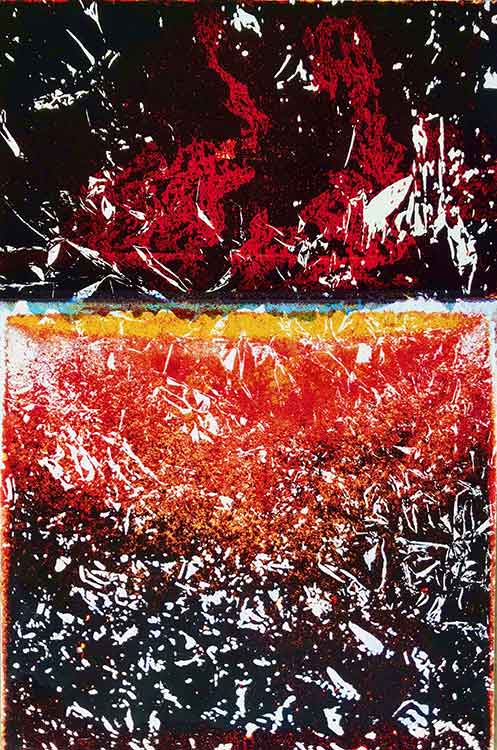
- Ibn El Farouk
The fragile frontier skin between fantasy and daydream, separating illusion from reality, is what matters for Ibn El Farouk’s photographic work. Focusing on the "liminal" disregarding the "before" and the "after" of the image...
Ibn El Farouk’s Photographic Work has a mirror effect feature that reflects what is being postponed so that what has been differed is reflected in another work, so the process of deferring the desire for completion lasts in effect indefinitely.
In the work of Ibn El Farouk there is no reference to reality, for photography becomes that same reality after everything that refers to the picture and the author has been destroyed.
The images in Ibn El Farouk’s photographs are akin to a texture, just like the texture, the mesh of the text. A photo-texture that holds a grip that weaves the texture... for the counterpoint is cunning and tricky.
Non-shape hides the erasure process that makes the reality palpable, hides the erasure process which makes reality felt, whereas the reality is imprinted in photographic world hints to nothing ; merely a veiled reality.

- Ibn El Farouk
Is it "a slippery slope of reality, working on its suspension where all its immediacy is lost : it is here without being here, without realism, without care, devoid of meaning" [1].
There is no form of reality without the death or suicide of all form of reality. Facing this situation we confront the "double" : the "one" in the "other", the suicidal/dead is slipping into the living, the bumps bounce within, the photographer is suffering so hard not to behold what is being erased from the surfaces he’s working on…
Are we witnessing what Annafri calls "dinstinctiveness" [2] when we restore to the form its absence of form ? That which Maurice Blanchot describes as "something facing us, something that is not the living being itself, nor is it a kind of reality nor that which is still alive, or someone else or nothing else..." [3].
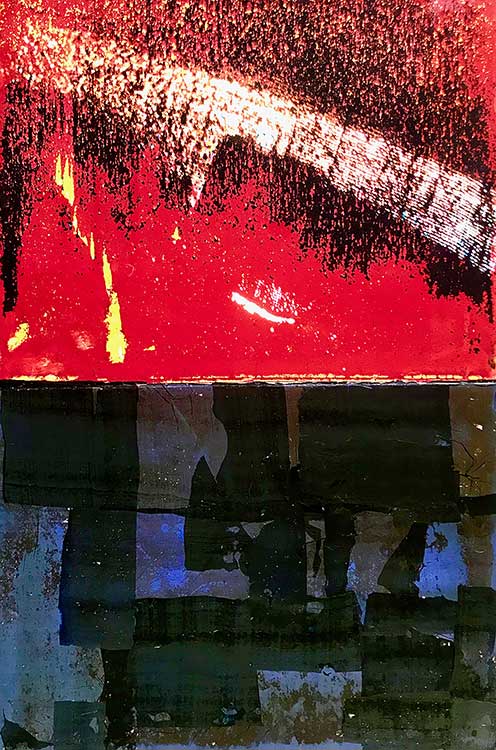
- Ibn El Farouk
In the" sink" the ghostly material reality of what will become a picture, on the brink of extinction, decomposes in the water of the sink. And when something begins to appear on the upper skin of the paper or the silver plate, reality has turned into a simulacra.
What the eye sees is a hole that appears in the water of the sink, floats on the paper surface, whereof the reality of the thing emerges... then all of a sudden everything disappears, and the border between realty and illusion turns into a double temptation.
But then what is this thing that disappears, drowning the reality with it ?
Let’s see then if, "The genesis of the ego, for Sigmund Freud, is in the frontier between an inside and an outside, the primary product of what was cast out from within that "outside" ; wherea, for Jacques Lacan, the inside is a fold of the externality, wherein lies the concept extinction" [4].
All that is picked up from/in the outside is abandoned inside, and it seems to me that Ibn El Farouk is performing a process of exhaustion on what is being abandoned. In doing so, he would be like someone who wants to catch the moment from an edge so hard to grasp.
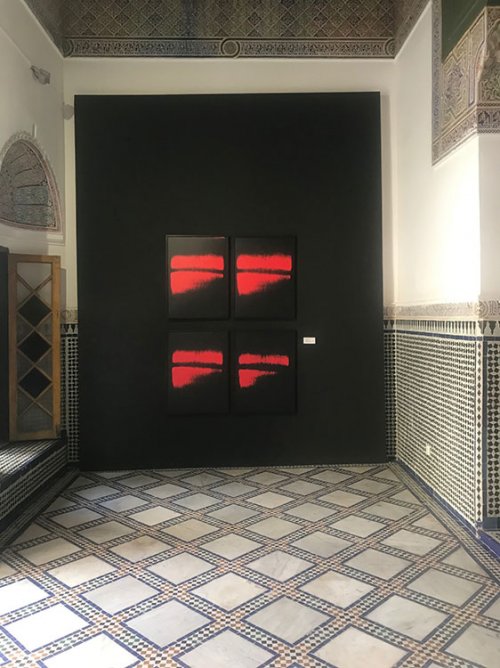
- Ibn El Farouk
What do the color strokes, here, refer to in this or that photographic work ? to the instant of where the picture is erased ? To the pre-genesis moment ? To the intersection between display and absence ? Or to the instant of decay of what has been gleaned between a click and another !
So, here we are, facing our optical illusion, hematomas that barely reflect what’s left of the scrape ; nebulous colors that do not take what is shining neither from within nor from without ; smudges ornate with silvery golden grains, as if they were sand grains scattered over surfaces of shapes with various sizes in the photographs of Ibn El Farouk...
Are we viewing photography when we are face to face with Ibn El Farouk ’s work ? As if something came out, as if something no longer existed... a baffle the size of exhaustion lapse, an insanity occupying the place of what is not lying within photography any more - There’s a world that’s hiding under the skin of the photographs. An invisible world tucked within the folds. Ibn El Farouk blade-scrapes his photographic material to exhaustion.
Then if "there is no multiple without predation, without cutting what might be known without it, as a full and self-sufficient presence : the multiple spontaneously differs the original, burns it, tempts and worries what may be otherwise simply identical and gives names, classifies under that particular saying or this." [5].
Is it some kind of photography excessively regressive beyond material formation ?
Is it the announcement of the emergence of an alternative to what has not yet been formed : the impact (foot print) of what will come ?
Ibn El Farouk’s photographs give us the possibility of assuming the death of photography, the possibility of declaring a mourning of Althea : Just an eye , with nothing for it to see, nothing below/on the skin, nothing on the surface or betwixt the folds.
The machine has faded away, and there’s neither "click" nor "clack" anymore, instead of raising the hand to say, long live photography, we’ll raise it to say farewell to photography.
Boujemaa Achefri
Translation by Mohammed GHAZAL
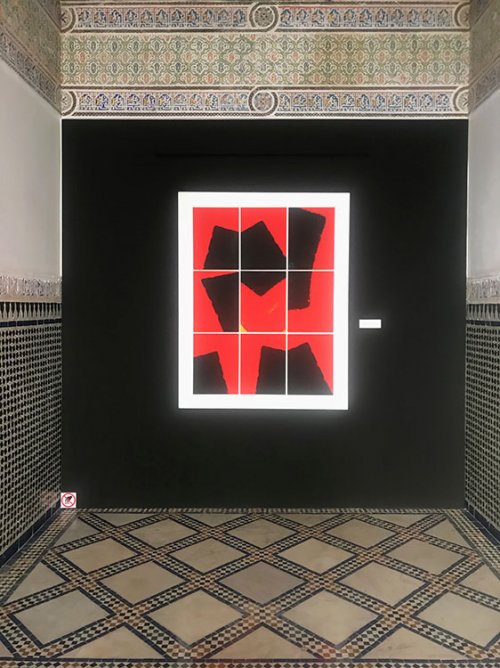
- Ibn El Farouk
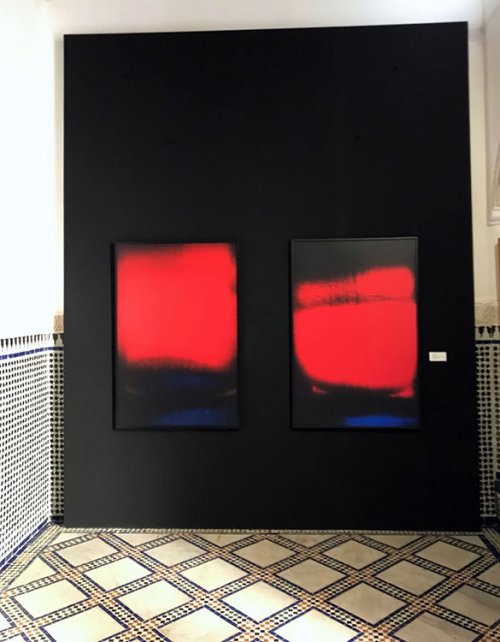
- Ibn El Farouk
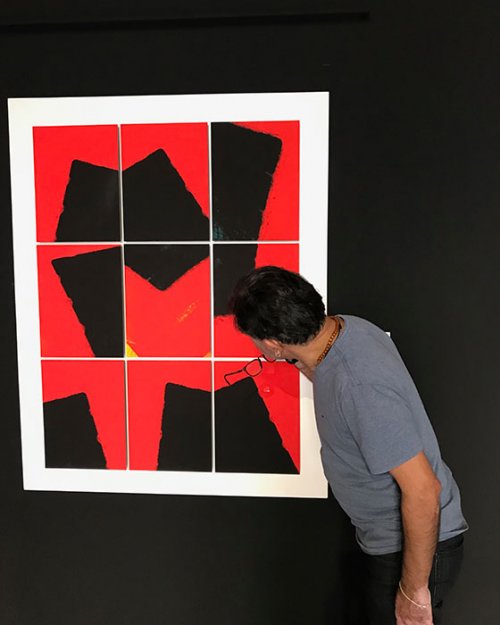
- Ibn El Farouk
Notes
[1] Sarah Kofman, Art and Depression, Thinking & Critique, No. 3, A Translation by Abdessalam Al-Tawil.
[2] “I created distinctiveness, so nothing is from me and nothing is from it”, Abd Al-Jabbar Al-Niffari, The Book of Attitudes and Address, Correction and Interest by Arthur Yohanna Arberry, AFAQ for Publication and Distribution, Cairo, p. 4.
[3] Maurice Blanchot, cited by Sarah Kofman in her article "Art and Depression".
[4] Fethi Bensalama, The sublimation, Jean-Luc Nancy, in Lignes, May 2022, p. 112.
[5] Sarah Kofman, "Art and Depression".
